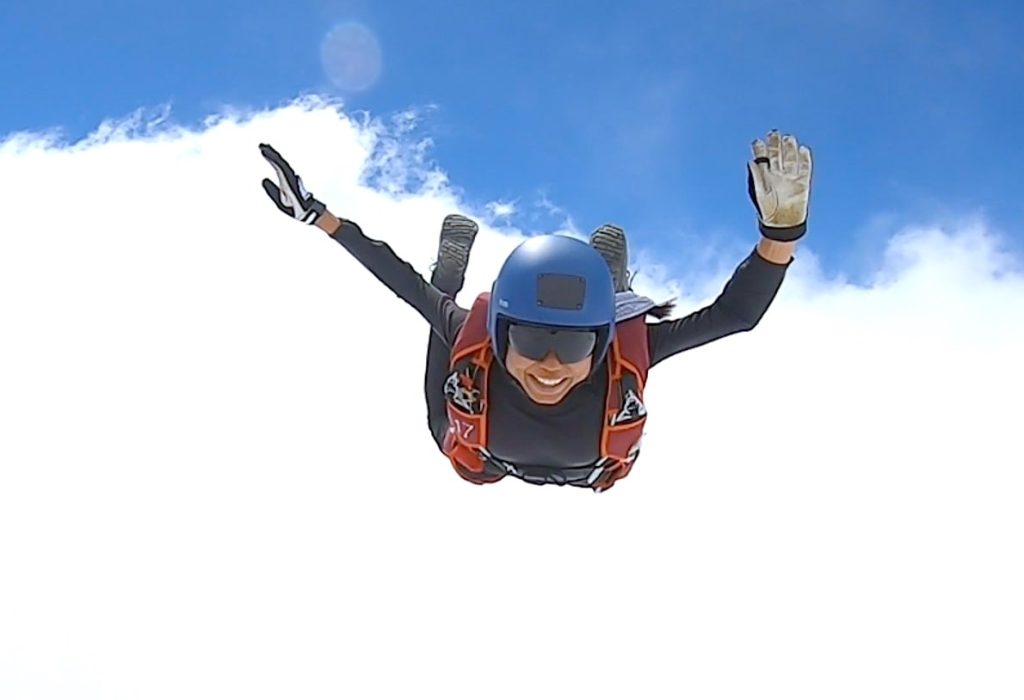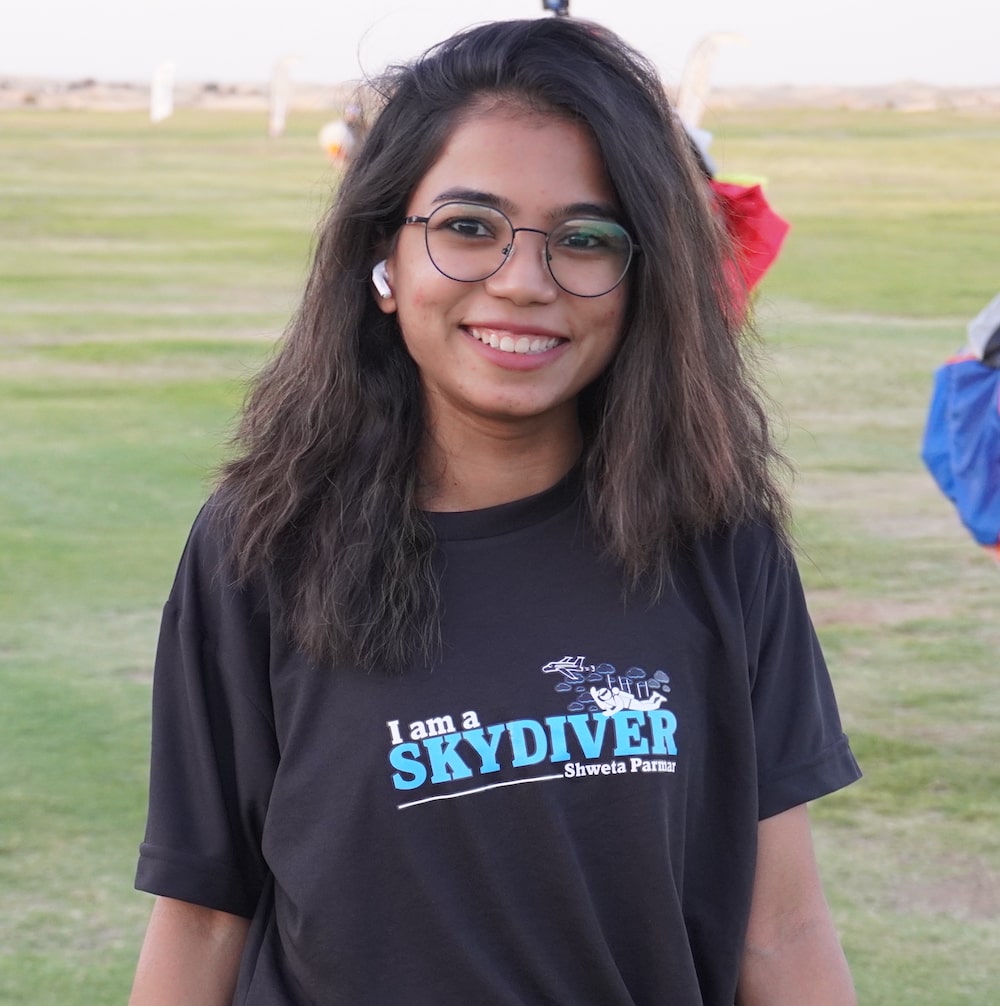Over the years, I have received numerous questions from people who are curious about solo skydiving.
FACT: We don’t have a skydiving school in India
Some are eager to try it for the first time, while others want to know more about the sport before taking the leap.
In this article, I’ll address some of the most common questions I receive about solo skydiving, ranging from safety concerns to equipment to training.
So, buckle up and get ready to soar through the skies with me!

FAQs Answered: How to Solo Skydive?
If you’re considering taking the leap and becoming a solo skydiver, it’s natural to have a lot of questions about the process.
In this FAQ guide, we’ll address some of the most common concerns and inquiries regarding solo skydiving as an Indian, so you can approach your training and jumps with confidence and excitement.
What are the Differences Between a Tandem Skydive and a Solo Skydive?
In a tandem skydive, you jump attached to an instructor who controls the parachute and landing.
In a solo skydive, you jump alone and control the entire jump, including the parachute deployment and landing.
How to Become an Indian Solo Skydiver?
To become a solo skydiver, one must complete a comprehensive training program covering all aspects of skydiving, including equipment, safety procedures, and freefall skills.
This typically involves taking an accelerated freefall (AFF) course or a static-line progression (SLP) course.
Both courses involve multiple levels of training and practice jumps under the supervision of certified instructors until the student demonstrates mastery of the necessary skills to jump solo.
What are Solo Skydiving Requirements or Criteria?
You must be 18 years old and yes, there is a weight limit to go skydiving. The maximum weight limit for AFF students is 95-100 kg.
Can You Skydive Alone for Your First-Time Jump?
No, skydiving alone for your first-time jump is neither possible nor recommended.
Skydiving requires specialized training and it is important to have an experienced skydiving instructor to guide you through the experience and ensure your safety.
You need to opt for AFF Skydiving Program where you can learn to skydive solo.
What is an AFF Skydiving Program/Course?
The AFF Skydiving Program is a basic skydiving course designed to teach individuals the correct and safe methods of skydiving.
The program is administered through the United States Parachute Association (USPA) and is considered the safest and most efficient way to learn the sport of skydiving.
AFF is an introductory program to skydiving that includes both ground instruction & supervised skydiving from the aircraft. It is designed to teach you the necessary skills to become a licensed skydiver.
During the program, participants work with two instructors or one instructor who teaches important skills during the 7 Levels of the AFF Solo Skydiving Program.
You will receive a minimum of 1-day on-ground training in basic skydiving procedures, free fall body position, canopy deployment, canopy control, and safety routines.
What is a USPA-A skydiving license?
A USPA-A skydiving license is a certification issued by the United States Parachute Association (USPA) that signifies the holder has met specific requirements to safely and proficiently participate in skydiving activities. The certification requires the completion of an AFF course and a number of skydiving jumps under the direct supervision of a USPA coach or instructor. Its holders are required to adhere to the USPA Code of Conduct.
How much does a USPA-A skydiving license cost?
The cost for a USPA-A skydiving license training can vary greatly, depending on the number of jumps and the location of the training.
Generally speaking, the cost of a complete USPA-A license training program can range from Rs.2.5Lakh to Rs.4.5Lakh. This fee includes instruction, jumps, and other fees associated with the training program. It doesn’t include your travel, stay, food, and other costs.
ONLY USPA-A LICENSE FEES IN DIFFERENT PLACES
| Place | Fees in Local Currency | Fees in INR |
|---|---|---|
| Russia | 188,000 Ruble | ₹210,000 |
| Thailand | 133,300 THB | ₹340,000 |
| Dubai | 18,690 AED | ₹420,000 |
| Abu Dhabi | 14,000 AED | ₹315,000 |
| Spain | 2,838 Euro | ₹260,000 |
What is the difference Between AFF & A-License?
AFF is your introduction to the world of skydiving solo. AFF is an eight-part course – four to six hours of ground training followed by seven supervised jumps – that teaches you the fundamentals of becoming a licensed skydiver.
To jump without supervision at any dropzone, you have to earn your USPA-sanctioned A license. To get your A, you have to complete 25 skydives (your initial tandem and your seven AFF jumps count toward your total), earn your A-license proficiency card, and know how to pack your own parachute.
How to decide on a skydiving place for a USPA-A license?
When deciding on a skydiving place for a USPA-A license, you should consider a few factors.
– First, safety should be your number one priority
- Look for a skydiving center with a great safety record and experienced instructors who are certified by the USPA.
– Secondly, consider the location.
- Like, How expensive is it to travel?
- Is staying affordable?
- Is food affordable?
- Can you get a visa quickly? etc.,
- Lastly, think about the overall cost.
Once you have weighed all these factors, you can choose the best skydiving place for your USPA-A license.
Can you wear glasses when skydiving?
Yes, you can either wear glasses or contacts. Most skydiving centers provide special goggles designed for individuals who wear glasses or contact lenses.
Can you bring your own camera?
The United States Parachute Association recommends that all jumpers carrying their own camera have 200 skydives or more. So, you can’t jump with your own camera before you complete 200 jumps.
Can you skydive with a disability?
You can skydive in most cases, even with a disability or a health condition. Amputees, people who are entirely or partially paralyzed, such as paraplegics and quadriplegics, people who are partially or wholly deaf/blind – all of them can and do a skydive, both solo and in a group.
How to Start a Career in Skydiving?
To start a career in skydiving, you can consider becoming a professional skydiving instructor, working in skydiving operations, or becoming a competitive skydiver.
The first step is to obtain the necessary certifications and training from a reputable skydiving school or organization.
It’s also important to gain experience and build a strong network within the skydiving community to advance in your career.
Note: You need at least 500 jumps and a skydiving coach rating to start your training as a Skydiving instructor.
Can You Learn Solo Skydiving in India?
No, you can’t learn solo skydiving in India.
There are no skydiving schools in the country that offer training programs for solo skydivers.
It’s important to research and choose a reputable school with experienced instructors and a strong safety record.
The training typically involves a combination of ground school, tandem jumps, and solo jumps, and you will need to demonstrate the necessary skills and knowledge to safely perform solo jumps.
How Can You Join Skydiver Shweta’s Skydiving Trips?
Interested individuals can typically fill out a registration. After that, you will receive a detailed itinerary along with the cost and information.
Contact Shweta on Instagram for MORE DETAILS
Hope to see you soon in the world of skydiving. Blue Skies!!!

Shweta Parmar is a skydiver, skier, and co-founder of Techmero. She is the fourth civilian woman skydiver from India and the First from Gujarat. Shweta lives in Vadodara, Gujarat, India. Flying with her own wings is her dream.
Thank You for Describing great experience of sky diving 🤿. I will be in touch with you for further information… And at Last I want to say that I AM ALSO GUJARATI and COMMANDO too.
I really wish to become a skydiver
hello mam ,
My name is Jyoti, and I’m a yoga teacher with a passion for adventure. One of my biggest dreams is to go solo skydiving—it’s something I really, really want to experience!
Hi Good evening, I am a retired Military officer, a battle casualty and war wounded soldier. I am from India. I am an amputee below knee and I do all my activities on a prosthetic leg..I have been a paraglider and a limca book of record holder for the same, I want to go skydiving solo with proper training on my artificial limb. Where should I go, Who can guide me I want to make record in this and go ahead in this.
Want to know A to Z guidance from Flight to stay to Training cost etc. Regards.
Thank you for sharing a great experience along with useful information , I’m also so much into sports and now in adventure sports also , it will be my great pleasure to join you